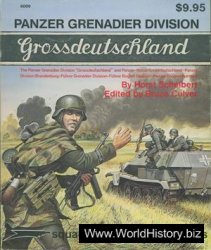The question of the identity of the peoples who were first called Germans is immensely complex. Three main approaches to the subject are historical, archaeological, and linguistic.
HISTORICAL
The earliest description of peoples called Germans is in Julius Caesar’s commentary about his military campaigns in Gaul between 58 and 51 B. C. Caesar’s remarks formed the basis for later Roman use of the name and thus for subsequent medieval and modern applications. Any discussion of the identity of the early Germans must begin with Caesar. The Greek writer Posidonius (135-51 B. c.) may have mentioned peoples he called Germans, but his works do not survive.
Two assertions by Caesar are of particular importance. One is that the peoples east of the Rhine were Germans, whereas those west of the river were Gauls (whom ancient Greek writers called Celts). The other is that the Germans had a less complex society than did the Gauls. Unlike the Gauls, the Germans had no towns, little agriculture, and less-developed religious rituals, and they spent much of their time hunting and fighting. From Caesar onward, Roman writers called the peoples east of the Rhine and north of the Upper Danube Germans. It is not known what these groups called themselves. It is very unlikely that they thought of themselves as any kind of single people, at least before many of them united to face the threat of Roman conquest.
In his work known as the Germania, published in A. D. 98, the Roman historian Tacitus described in greater detail the peoples whom Caesar had called Germans. From the second half of the sixteenth century, when the manuscript of his writing was rediscovered and translated, the account of Tacitus formed the basis for many studies of the early Germans. Much of his description was applied even to groups who lived many centuries after the peoples he called Germans. Well into modern times, scholars interpreted his work as if it were an ethnographic account of peoples in northern Europe beyond the Roman frontier.
Approaches to the writings of Caesar and Tacitus have become more critical. Many historians believe that Caesar’s assertions that the peoples east of the Rhine were Germans was politically motivated, to portray the Rhine as a border between Gauls and Germans and thus a cultural frontier at the eastern edge of peoples whom he was fighting to conquer. Much of Caesar’s description of the Germans as a simpler people than the Gauls may have been based on long-held Roman ideas about the geography and the peoples of northern Europe. Caesar had little direct contact with groups east of the Rhine, and his remarks about them were made in the context of his primary concern, which was the conquest of Gaul.
A century of critical study of Tacitus has led to the conclusion that his Germania should be approached primarily as a literary work, rather than an ethnographic one. Many believe that his descriptions of the Germans tell more about Roman attitudes and values than about the peoples of northern Europe. Whereas Roman writers, following Caesar and Tacitus, regarded Germans and Gauls as dis-
Tinct peoples, Greek authors, such as Strabo and Cassius Dio, considered them part of the larger group of peoples whom they called Celts. Later Roman and medieval writers built upon the traditions of their predecessors, classifying many peoples identified in later centuries—such as Burgundians, Franks, Goths, and Langobards—as Germans.
ARCHAEOLOGICAL
The archaeological evidence shows a much more complex situation than Caesar and Tacitus describe. When Caesar was writing, between 58 and 51 b. c., the peoples east of the upper and middle Rhine were very much like those west of the Rhine against whom Caesar was fighting. Large fortified towns known as oppida dominated the landscape. As at the oppida in Gaul, the archaeology shows complex economic and political organization, with mass production of pottery and iron tools, minting of coins, and long-distance trade with much of Europe, including Roman Italy. East of the lower Rhine, however, the archaeology indicates a different kind of society, without the large oppida and with smaller-scale manufacturing and commerce. In this region Caesar’s assertion about lack of towns corresponds to the archaeological evidence, but his statements about undeveloped agriculture and the major role of hunting are proved wrong by the archaeology. Intensive farming and livestock husbandry had been practiced in the region for some four thousand years before Caesar’s time.
The style of material culture, especially metal ornaments and pottery, in much of the region east of the lower Rhine is known as Jastorf, and it contrasts with the La Tene style characteristic to the south and west. Earlier archaeologists have linked La Tene style with Celts (Gauls) and Jastorf style with Germans, but studies show that such direct connections between styles and peoples named by Roman and Greek writers are unwarranted.
Throughout the Roman period (50 b. c. to A. D. 450), the archaeology shows regular interactions— some peaceful, some violent—between the Roman provinces west of the Rhine and the unconquered lands to the east. Many graves east of the Rhine contain fine products of Roman manufacturing, such as pottery, bronze vessels, ornaments, and even weapons. Such settlements as Feddersen Wierde in Lower Saxony show that trade with the Roman world brought both wealth and social change to communities in these regions.
LINGUISTIC
The category “Germanic” as it applies to language is difficult to investigate before the time of the Roman conquests because the Iron Age peoples did not leave writings. Roman and Greek observers did not use language as a criterion in distinguishing the peoples of northern Europe, probably because they did not know enough about the native languages. When runes were developed in northern parts of the continent (by people familiar with Latin), probably in the first or second century A. D., they indicate the presence of a well-developed language that linguists classify as Germanic.
In the Rhineland, where many inscriptions survive from after the Roman conquest, some names can be linked with Germanic and others with Celtic languages. Certain names even combine elements of the two linguistic traditions. Probably in much of temperate Europe at the time of Caesar and Tacitus, many people spoke languages that could not be classified easily as either Germanic or Celtic today but that included elements associated with both of those categories.
See also Oppida (vol. 2, part 6); Manching (vol. 2, part
6); Gergovia (vol. 2, part 6); Kelheim (vol. 2, part
6); Langobards (vol. 2, part 7).
BIBLIOGRAPHY
Bazelmans, Jos. “Conceptualising Early Germanic Political Structure.” In Images of the Past: Studies on Ancient Societies in Northwestern Europe. Edited by N. Roymans and F. Theuws, pp. 91-129. Amsterdam: University of Amsterdam, 1991.
Beck, Heinrich, ed. Germanenprobleme in heutiger Sicht. Berlin: Walter de Gruyter, 1999.
Beck, Heinrich, Heiko Steuer, and Dieter Timpe, eds. Ger-manen, Germania, Germanische Altertumskunde. Berlin: Walter de Gruyter, 1998.
Lund, Allan A. Die ersten Germanen: Ethnizitat und Ethno-genese. Heidelberg: Universitatsverlag C. Winter, 1998.
Pohl, Walter. Die Germanen. Munich: R. Oldenbourg, 2000.
Todd, Malcolm. The Early Germans. Oxford: Blackwell, 1992.
Wells, Peter S. Beyond Celts, Germans, and Scythians: Archaeology and Identity in Iron Age Europe. London: Duckworth, 2001.
Peter S. Wells





 World History
World History









